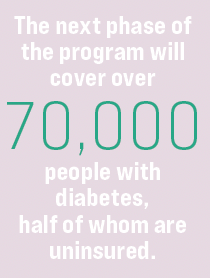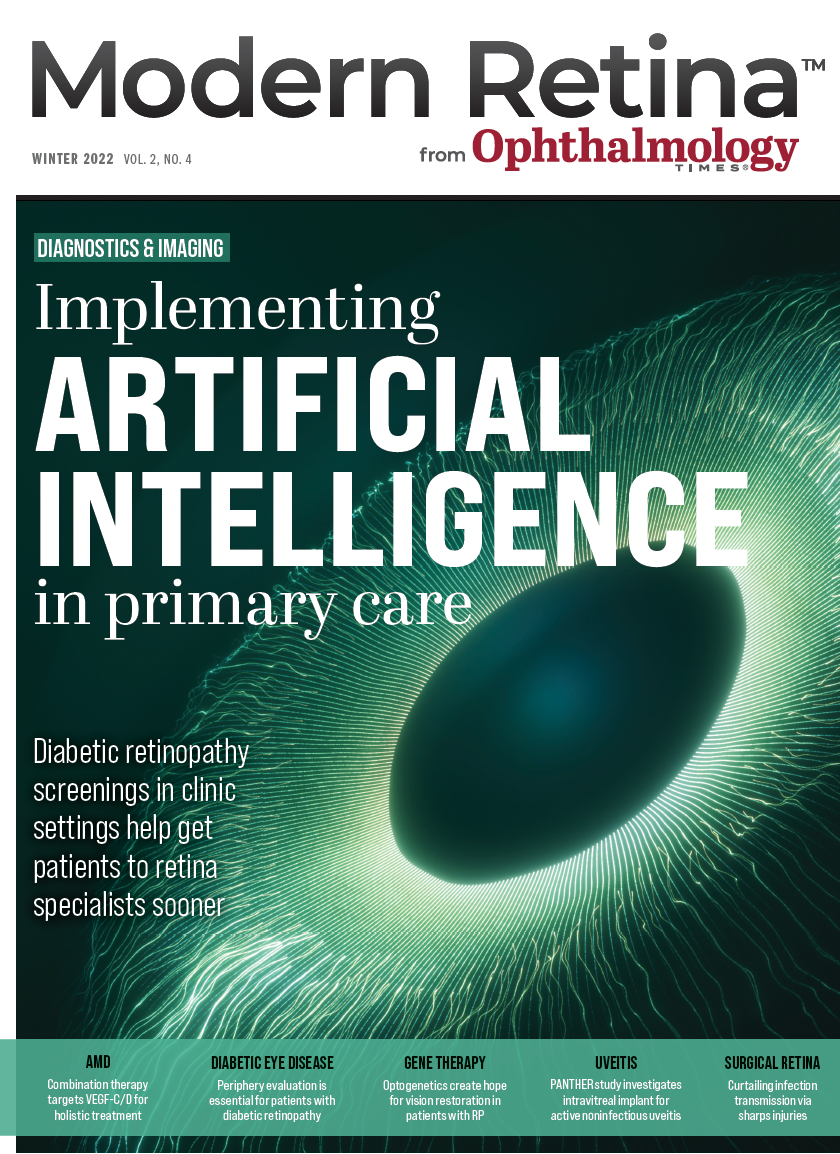Leaders in academic ophthalmology discuss AI for eye screening
Artificial intelligence in a primary care and clinic settings increases the likelihood of catching diabetic retinopathy in underinsured patients, resulting in increased successful referrals.

There’s no denying the data that show at least one autonomous AI technology can detect diabetic retinopathy (DR) far better than the dilated exam performed by ophthalmologists. But is it enough to convince physicians that the procedure should be adopted in primary care and other nonspecialist settings?
“AI is real…and we have to understand how to use it effectively for the care of our patients,” said R.V. Paul Chan, MD, head of the Department of Ophthalmology and Visual Sciences at the University of Illinois at Chicago. “Looking at the workflows around AI for diabetic retinopathy, I think that most of us now are using it in the primary care setting.”
Chan spoke at the annual meeting of the American Academy of Ophthalmology during a symposium that featured leaders in the specialty sharing their experience and perspective on the benefits of AI from LA-based Eyenuk, Inc., a global AI digital health company.
“One of the big questions…we all have around AI technology is ‘does it work?’,” Chan told the audience. According to “the data and the publications that have,” he answered, “it’s very, very good at identifying this more than mild diabetic retinopathy.”
Payments and Population Health
While the University of Illinois at Chicago is in the early stages of implementing the FDA-cleared Eyenuk EyeArt system for DR screening at its primary care, general medicine, and ophthalmology practices, other major academic medical centers like Temple University and the University of Utah are expanding their use of AI technology in primary care practices, urban
centers, rural settings, and federally qualified health
centers (FQHC).

The benefit of AI screening is 2-fold, according to symposium participants. It increases access to DR testing and treatment in underserved areas, and it improves population health for patients with diabetes who are at risk for DR.
“About a third of the people in our zip code live below the poverty line; about half of them live below the deep poverty line,” said Jeffrey D. Henderer, MD, chair of the Department of Ophthalmology at Lewis Katz School of Medicine at Temple University. “We have a lot of patients who don’t get a lot of [the] care that they need.”
In 2020 Temple launched the Eyenuk eye screening program to identify at-risk patients who weren’t under current care, screen and refer those who tested positive for DR, and improve performance on Healthcare Effectiveness Data and Information Set (HEDIS) scores, which can translate into reimbursement payments.
The University of Utah transitioned to autonomous AI diabetic screening in 2021, piloting a program at the Utah Diabetes and Endocrinology Clinic, which to date has completed more than 170 tests, according to Eric D. Hansen, MD, an assistant professor of ophthalmology and visual sciences at the school.
Coincidentally, the university has the same rate of referrable and vision-threatening disease as Temple, and within a very short time of implementing the new technology, it saw a 10% increase in successful referrals of patients who had screened positive for DR.
The program is being expanded statewide to encompass close to 13 clinics at FQHCs, community health centers, and safety net clinics, Hansen noted. Within 6 months of starting a pilot at an FQHC in the Salt Lake City area, the screening rate jumped from 20% to 60%, so the school is now expanding the pilot to 4 other FQHCs, each with multiple clinics, Hansen said, and the next phase of the program will cover over 70,000 people with diabetes, half of whom are uninsured.
Hansen, who worked with Eyenuk and the clinics to cover the cost of the fundus cameras, plans to use proper reimbursement codes to bill for screenings. But it’s not just the testing that’s important, it’s getting patients to equitable, affordable care: “If you screen them, you have to be able to deliver the care,” he observed. “Utah is spread out, it has a lot of underserved areas and rural locations, and we want to deliver quality care. And quality care is equitable, and importantly, it’s also timely and affordable.”
The university is working to solve deficiencies in delivery of care by setting up a database of providers who can see underinsured or uninsured patients. “We’re still in the process of getting to where we want to be, and that’s integrated, equitable retinal care for all…populations in our state,” Hansen stated. “But it’s certainly true that the AI platform is helping us get there.”
Deployment in the US and Abroad
Diabetes is a population health issue that is growing, said Steven Yeh, MD, chair and director of retina and uveitis services at the University of Nebraska Medical Center, who cited a recent study that found the worldwide prevalence of diabetes to be over 20%.
According to the World Health Organization, a total of about 422 million people have diabetes, and most of them live in low- and middle-income countries. Approximately 1.5 million deaths are attributed to diabetes annually, and more than 1 million people become blind due to the disease.
“When you look at the numbers, they really are staggering,” said Dr Yeh. “We think about this oftentimes on an…individual patient basis, but…we’re really on the cusp of thinking about artificial intelligence to reach other populations.”
Diabetes disproportionately affects ethnic and racial minorities in the US, with Black adults being 60% more likely to be diagnosed with the disorder and more than 800,000 Black Americans having DR that can lead to blindness.
Nearly 10% of Nebraskans, or some 140,000 individuals, have diabetes. According to Yeh, the University of Nebraska and Nebraska Medicine are at a relatively early stage of AI screening deployment in collaboration with primary care and ophthalmology and are considering subspecialty clinics, including those forvdiabetes, endocrine, and metabolism.
“We are looking forward to a day that we can actually employ this technology…in [the] different populations that we take care of, both within the United States and globally.”
Todd Stein
E: todd@toddsteincommunications.com
Stein is the founder of Todd Stein Communications, which represents Eyenuk for public relations.
Newsletter
Keep your retina practice on the forefront—subscribe for expert analysis and emerging trends in retinal disease management.





.png&w=3840&q=75)









